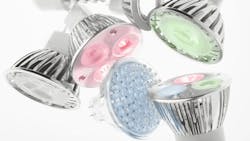Researchers suggest that the biggest gains that resulted in advances in efficient lighting are represented not only in energy savings, but in increased productivity.
Over the course of history, advances in primitive lighting sources – from candles to gas lamps to electric bulbs – led to increased light consumption rather than lower overall energy use, according to Jeff Tsao of Sandia National Laboratories and Harry Saunders of The Breakthrough Institute. Workers no longer had to call it a day shortly after nightfall, and instead could continue to work at night with the help of lighting.
Tsao and Saunders recently predicted that light-emitting diodes (LEDs) are poised to take over from the Edison light bulb as the next, more efficient light source of choice. While the focus on advances in lighting generally surrounds the potential energy savings these new lights can offer, Tsao and Saunders instead drew attention to the increased productivity that was is possible with better lighting.
With their article, “Rebound Effects for Lighting,” in the journal Energy Policy, the researchers strive to clear up misconceptions that their earlier research created. Namely, they say their original findings in 2010 were misinterpreted to suggest that efficiency improvements in lighting actually were not improvements at all because reductions in neither overall energy usage nor overall lighting costs would occur.
While the researchers did highlight that historically, improvements in lighting have led to increased light consumption rather than lower overall energy use by society, they were not setting out to discount the strides taken in energy-efficient lighting. Rather, their efforts were focused on how better, more advanced or more efficient lighting could lead to increased productivity.
“We thought that many in the energy economics community were still unaware of the work, and of the benefit – even when there is no direct energy-use savings – of energy efficiency and other welfare-enhancing technologies,” Tsao said.
About the Author

Laura Walter
Laura Walter was formerly senior editor of EHS Today. She is a subject matter expert in EHS compliance and government issues and has covered a variety of topics relating to occupational safety and health. Her writing has earned awards from the American Society of Business Publication Editors (ASBPE), the Trade Association Business Publications International (TABPI) and APEX Awards for Publication Excellence. Her debut novel, Body of Stars (Dutton) was published in 2021.
